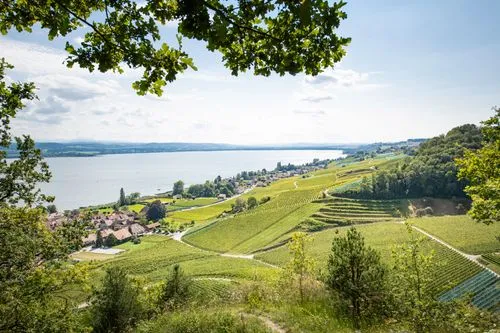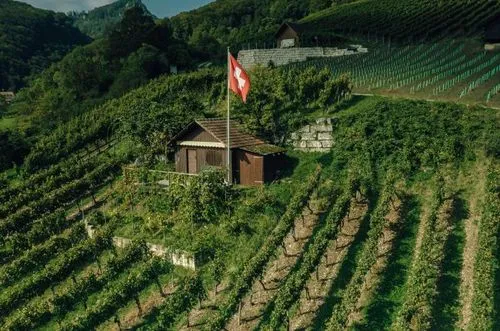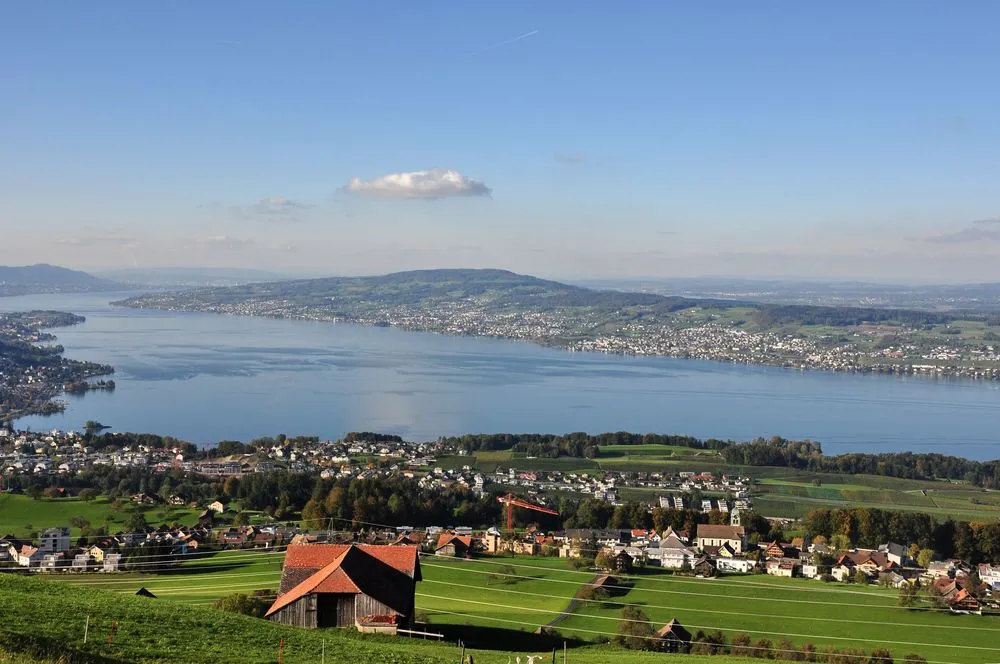The first written mention of winegrowing in the canton of Schwyz dates back to Abbot Werner (1173–1192) from Einsiedeln Abbey, who planted a vineyard above Pfäffikon. Later, around 1343, vineyards were also mentioned in Küssnacht and Schwyz.
In the 19th century, the area under vine was probably several times larger than it is today. Increasing imports, phylloxera and downy mildew were mainly responsible for the decline. The area under vine shrank from 50 hectares in 1886 to just under seven hectares in 1960.
Today, winegrowing has flourished once again in this traditional cherry-growing region. The wines are characterised by intense aromas and are considered rarities. Today, the area under cultivation covers 36.6 hectares of AOC, of which 52.7% is red wine and 47.3% white wine.
The vineyards in the canton of Schwyz are mainly located on Lake Zurich, for example in the municipalities of Freienbach, Altendorf, Wangen and Einsiedeln. The only exception are the vineyards in Immensee/Küssnacht, which lie towards central Switzerland.
The calcareous molasse soils, formed by the Linth Glacier, offer ideal conditions for growing grapes. The mild climate is particularly favourable for Pinot Noir and Müller-Thurgau, the two main varieties of the region.





